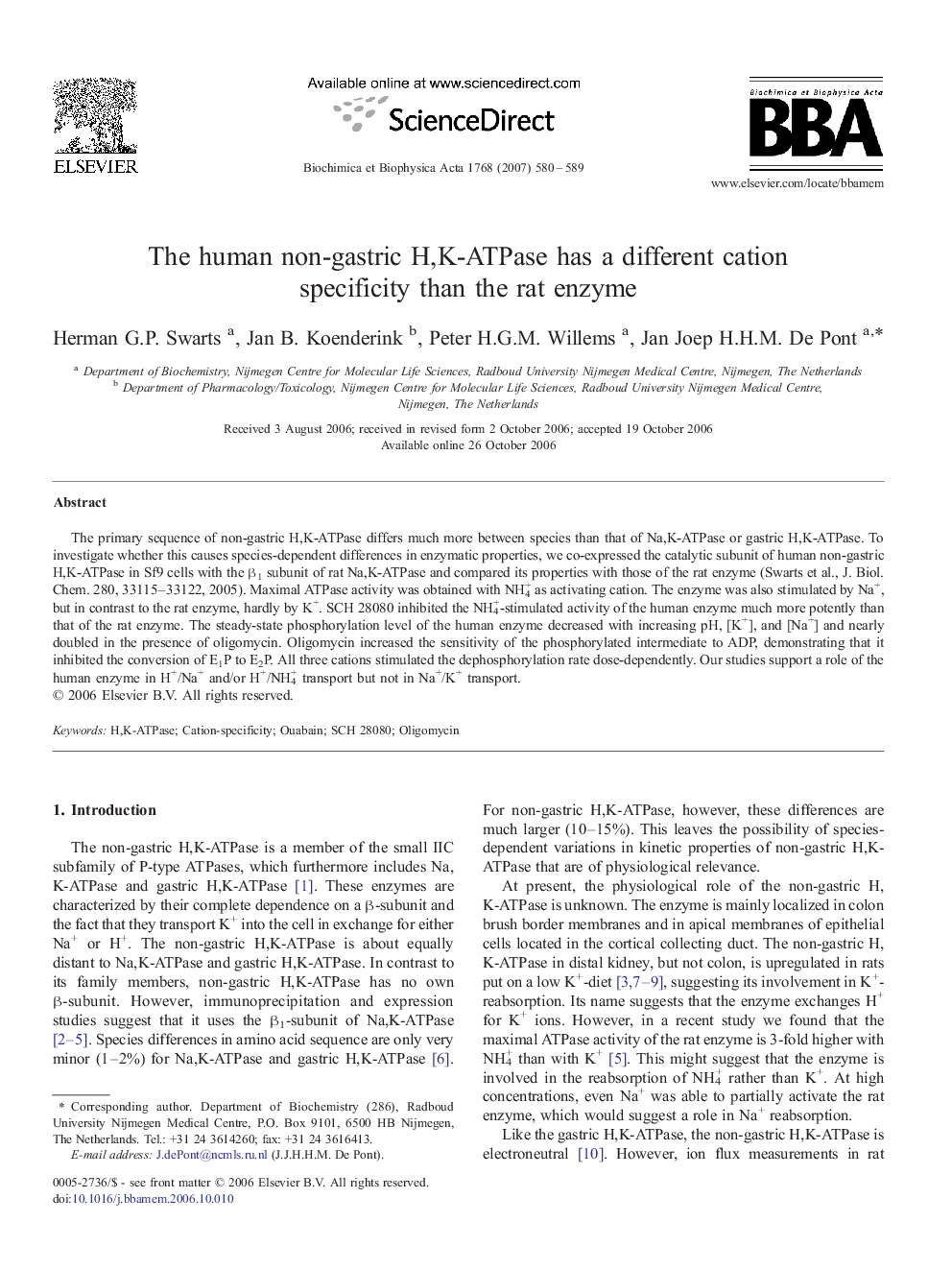| Article ID | Journal | Published Year | Pages | File Type |
|---|---|---|---|---|
| 1945857 | Biochimica et Biophysica Acta (BBA) - Biomembranes | 2007 | 10 Pages |
The primary sequence of non-gastric H,K-ATPase differs much more between species than that of Na,K-ATPase or gastric H,K-ATPase. To investigate whether this causes species-dependent differences in enzymatic properties, we co-expressed the catalytic subunit of human non-gastric H,K-ATPase in Sf9 cells with the β1 subunit of rat Na,K-ATPase and compared its properties with those of the rat enzyme (Swarts et al., J. Biol. Chem. 280, 33115–33122, 2005). Maximal ATPase activity was obtained with NH4+ as activating cation. The enzyme was also stimulated by Na+, but in contrast to the rat enzyme, hardly by K+. SCH 28080 inhibited the NH4+-stimulated activity of the human enzyme much more potently than that of the rat enzyme. The steady-state phosphorylation level of the human enzyme decreased with increasing pH, [K+], and [Na+] and nearly doubled in the presence of oligomycin. Oligomycin increased the sensitivity of the phosphorylated intermediate to ADP, demonstrating that it inhibited the conversion of E1P to E2P. All three cations stimulated the dephosphorylation rate dose-dependently. Our studies support a role of the human enzyme in H+/Na+ and/or H+/NH4+ transport but not in Na+/K+ transport.
